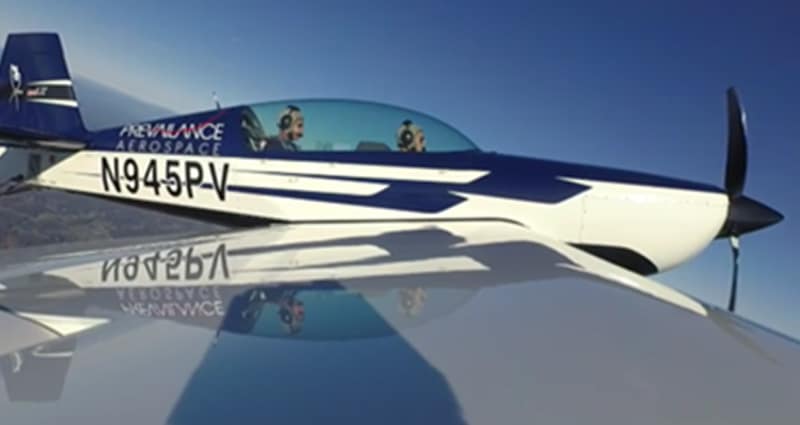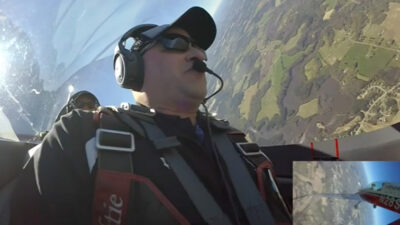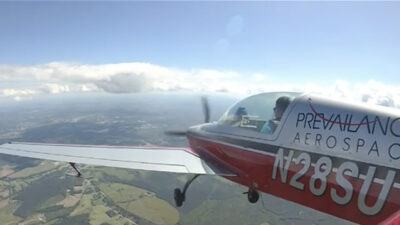Defeating Startle—Training You Cannot Afford to Live Without

Upset Prevention and Recovery Training (UPRT) is becoming ever more widely recognized as a necessity in combating the grim statistics associated with Loss of Control Inflight (LOC-I). The International Civil Aviation Organization (ICAO) ruled in November 2013 that UPRT would be required for all Part 121 Pilots by 2019, and it is widely anticipated that the FAA will follow suit.
Debates about how best to complete UPRT inevitably include:
- Should UPRT be accomplished on aircraft or simulated?
- Which aircraft should be employed?
- When should the training be accomplished, and how frequently should that training be revisited?
What is no longer seriously questioned, however, is the fact that LOC-I is the number one cause of fatal aviation mishaps in recent aviation history, and at least anecdotally, for the entire history of heavier-than-air manned flight. Why do many flight path divergences go uncorrected until the point that they become aircraft upsets? Some cite the reduction in hand-piloting that today’s automated flight systems enable. However, the critical element that keeps this deadly phenomenon in the number one position is the byproduct of surprise: the debilitating startle effect.
Studies have shown that the greater the perception of risk, the more severe the startle effect in both debilitation and duration. Griffith University researchers concluded there are two key elements that contribute to the startle effect’s magnitude and duration:
“At the heart of the acute stress response is an appraisal that a situation is threatening and is beyond the immediate control of the individual.”
These two factors are therefore key to shaping an effective UPRT program; it should present the trainee with a legitimate upset experience of sufficient intensity to elicit a startle effect, while imbuing an understanding of how to correct the upset situation and recover the airplane to a normal flight regime.
So, let’s address the issue of intensity. When balancing intensity versus safety, the clear imperative is to conduct the training in a safe manner. In fact, if the trainee does not fundamentally believe his or her safety is assured, learning cannot take place. Yet to elicit startle, the trainee has to experience something outside the norm.
In the author’s experience, most pilots are relatively comfortable within the parameters of commercial pilot certification maneuvers; up to 60° angle of bank, and +/- 20° pitch attitude with G loads between ½ and 2 ½. Beyond these parameters, the trainee’s comfort level is typically exceeded, and their experience greatly intensified. The first time a cross-controlled stall rolls the airplane inverted, that trainee begins to not only understand the actual threat of LOC-I and the importance of maintaining coordinated flight, but begins to truly experience airborne startle.
While the improved fidelity of today’s full-motion simulators can approximate the sights and, to a lesser extent, sensations of LOC-I, there’s no way to avoid the knowledge that the box is firmly strapped to the planet, and therefore the scenario presents no existential threat if recovery procedures are incorrectly applied. Thus, while the trainee may take away the procedural knowledge for upset or even spin recovery, they may never experience, and therefore become inoculated from, startle, without actually flying an all-attitude aircraft through a series of upsets and spins. So, while in an optimal world the best aircraft to use for UPRT would be the one the pilot trainee operates daily, safety margins in transport category and even normal or utility category aircraft are inadequate when the goal is to place the aircraft in a situation that will routinely elicit the startle effect.
But, does it work? Is UPRT actually effective at reducing startle effect during aircraft upsets? A recent FAA General Aviation Steering Committee Safety Enhancement Topic concluded:
“Fatal general aviation accidents often result from inappropriate responses to unexpected events. Humans are subject to a “startle response” when they are faced with unexpected emergency situations and may delay action or initiate inappropriate action in response to the emergency. Training and preparation can reduce startle response time and promote more effective and timely responses to emergencies.”
OK… more studies. What about real-world results? In the following video from the final sortie of a three-flight UPRT syllabus, the trainee intends to recover an Extra 330 LX from an upright spin when the unexpected occurs. The pilot commits a recovery execution error (delayed elevator application), unintentionally placing the airplane into a progressive spin (surprise!). The instructor does not intervene except to confirm what has occurred, and while the trainee could be expected to experience startle following the surprise secondary spin, he has learned that the unexpected loss of control is not beyond his ability to recover from, and is therefore immediately able to re-initiate a proper spin recovery with minimal additional altitude loss.
This trainee completed his UPRT during Liberty University’s commercial pilot course of instruction; an opportune time when the trainee has sufficient aviation experience to internalize the lesson’s learning points, yet before beginning a career flying passengers for hire. In the author’s opinion, refresher training should be accomplished along with the biennial flight review, boosting the startle inoculation the pilot gained during initial UPRT when faced with unusual or extreme aircraft attitudes. This training, complemented by simulator training in the actual aircraft model, will finally make headway against the grim statistics of LOC-I that have plagued aviation since Wilbur Wright first coined the term “stall.”
Resources
1 Rosenkrans, W. (2015, March 31). Gearing up for 2019, Retrieved December 29, 2017
2 Loss of Control in-Flight Accident Analysis Report (1st Edition). (n.d.). Retrieved December 29, 2017, from IATA website.
3 Managing Startle: Individual crew and Organizational Strategies [Griffith University]. (n.d.). Retrieved December 29, 2017, from IATA website

Prevailance Aerospace is a UPRT provider that has been working with corporate, government, and general aviation pilots to improve safety in the aviation industry. Prevailance Aerospace uses Extra 300 Series Aircraft for training and our pilots are experienced aviation professionals from various military and general aviation backgrounds. We know that successful aviation endeavors are accomplished through an uncompromising commitment to safety, impeccable professionalism, tremendous attention to detail, and constant improvement.
http://prevailanceaerospace.com
© 2025 Prevailance Aerospace. All Rights Reserved.
Next ArticleRelated Posts

Rise Up for the Next Generation
There is no doubt in my mind that flying is the way mankind is meant to travel, yet the continued success and growth of the industry requires a refined approach to safety. As someone who flies commercially and with a new interest in a career in aviation, I want the reassurance that the pilot in command (PIC) and crew are adequately prepared if and when an aircraft ends up in an upset.

Three Considerations That Set Pilots Up for Success
Constantly reviewing aviation accidents and incidents is challenging. As an instructor, it is not only the injuries and fatalities that make it hard, but the sheer magnitude of avoidable aspects of each incident. These safety reports prove that every Pilot in Command (PIC) is accountable for what transpires.

